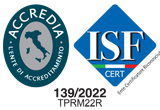
The Draghi Plan to Save Competitiveness and the Automotive Industry in Europe
Simonluca Pini, Contributing Editor Sole 24 Ore
The former Italian prime minister sets the course for bringing the old continent back to global competitiveness, starting with the increasingly struggling automotive sector.
The alarm was raised directly by Mario Draghi, former President of the European Central Bank and former Italian Prime Minister, in a report highlighting all the critical issues facing the continent's industry in competition with China and the United States. The key theme is technological neutrality, particularly when it comes to automotive. From the aftermarket sector, an alarm is also sounding to protect the entire industry, with technological neutrality remaining a cornerstone for a sustainable energy transition both environmentally and industrially.
“Battery electric is not the only system: we must explore the issues of energy transition with greater perspective and realism, with a technologically neutral approach,” says Mauro Severi, President of Aica (Italian Association of Automotive Equipment Manufacturers). “We need to rethink the architecture of energy transition policies. As is well known, the fines and bans imposed by the European Union have caused serious harm to the entire continental automotive supply chain, including component manufacturers and automotive equipment makers. The Motor Valley, our sector companies can still do a lot and collaborate in this endeavor to build a more sustainable future.”
This vision is also reflected in the proposals contained in the Draghi plan, where themes like the revision of the Fit for 55 plan (i.e., the stop to thermal vehicles by 2035, imposed by the EU but clashing with a weak electric market in Italy and Europe as a whole), joint projects, and greater standardization would provide a real breath of fresh air for the entire sector.
Pragmatic Approach and Revision of the Fit for 55 Plan
Neutral approach, market-compatible proposals, and precise information on what will happen in the future, starting from the new standards required in 2025. One of the most important proposals of the Draghi plan is linked to a technologically neutral approach in the revision of the Fit for 55 plan. Given the rapid evolution of the automotive sector and the related legislation, it is important to ensure transparency in political programs, including the timeline of forthcoming legislative proposals and consultations. The revision should also include an updated impact assessment, of the EU’s long-term emission reduction targets, and of the current situation. It is predicted that in 2040, about 45% of the cars on the road in Europe will be thermal and hybrid. It is important to clarify the methodology for alternative fuels, still lacking, and new analysis parameters. By 2025, indeed, the Commission will present a methodology for the life-cycle assessment of greenhouse gas emissions for light vehicles.
Joint Projects for Software and Autonomous Driving
Among the Draghi proposals, there are noteworthy European joint projects in innovative areas: software development and technology related to autonomous driving. Projects of Common European Interest (IPCEI) are a state aid tool, focused on ambitious cross-border research, development, and innovation (RD&I) activities and early industrial deployment activities (FID). Member States pool resources in sectors of strategic and common European interest, where the market alone does not deliver efficient results and is often not economically sustainable in the early stages. The EU might consider supporting IPCEI in the automotive sector, where scale, standardization, and collaboration will make the difference. Three possible examples are: software-defined vehicles and autonomous driving solutions; a shared development on electric mobility technologies, where cooperation can enable cost reduction and economies of scale.
Competition with China and the USA
A common denominator of the Draghi proposals is the attention to the global challenge, particularly with the United States and China. Despite the excellence and integration of European production chains, the EU automotive industry is losing global competitiveness, especially compared to China, which is rapidly advancing in e-car production and related technologies. Chinese and American industrial policies, such as the Inflation Reduction Act in the United States, are creating a favorable environment for the growth of EV-related sectors, putting additional pressure on European manufacturers. China’s ability to produce on a large scale and innovate quickly is putting pressure on EU manufacturers, who are disadvantaged by high energy costs and stricter environmental regulations.
Next-Generation Standards
The automotive industry would benefit from adopting common standards through collaboration among all players, as is already happening in China. Among the standards to be defined are charging protocols (including charging points, sockets, and ports), communication functionalities (including vehicle-to-charging point with bidirectional charging), and the charging point-management system protocol. On the front of the circular economy, recycling stands out, while on the IT technology side, there is the development of security systems for data files, standardized software programming languages, and data exchange protocols. Additionally, aligning international regulations with those outside the EU is also important, particularly regarding the standardization of technical parameters, vehicle life cycle assessment.
The Draghi report points out that the EU has not achieved full harmonization of vehicle type approval processes.
“Battery electric is not the only system: we must explore the issues of energy transition with greater perspective and realism, with a technologically neutral approach,” says Mauro Severi, President of Aica (Italian Association of Automotive Equipment Manufacturers). “We need to rethink the architecture of energy transition policies. As is well known, the fines and bans imposed by the European Union have caused serious harm to the entire continental automotive supply chain, including component manufacturers and automotive equipment makers. The Motor Valley, our sector companies can still do a lot and collaborate in this endeavor to build a more sustainable future.”
This vision is also reflected in the proposals contained in the Draghi plan, where themes like the revision of the Fit for 55 plan (i.e., the stop to thermal vehicles by 2035, imposed by the EU but clashing with a weak electric market in Italy and Europe as a whole), joint projects, and greater standardization would provide a real breath of fresh air for the entire sector.
Pragmatic Approach and Revision of the Fit for 55 Plan
Neutral approach, market-compatible proposals, and precise information on what will happen in the future, starting from the new standards required in 2025. One of the most important proposals of the Draghi plan is linked to a technologically neutral approach in the revision of the Fit for 55 plan. Given the rapid evolution of the automotive sector and the related legislation, it is important to ensure transparency in political programs, including the timeline of forthcoming legislative proposals and consultations. The revision should also include an updated impact assessment, of the EU’s long-term emission reduction targets, and of the current situation. It is predicted that in 2040, about 45% of the cars on the road in Europe will be thermal and hybrid. It is important to clarify the methodology for alternative fuels, still lacking, and new analysis parameters. By 2025, indeed, the Commission will present a methodology for the life-cycle assessment of greenhouse gas emissions for light vehicles.
Joint Projects for Software and Autonomous Driving
Among the Draghi proposals, there are noteworthy European joint projects in innovative areas: software development and technology related to autonomous driving. Projects of Common European Interest (IPCEI) are a state aid tool, focused on ambitious cross-border research, development, and innovation (RD&I) activities and early industrial deployment activities (FID). Member States pool resources in sectors of strategic and common European interest, where the market alone does not deliver efficient results and is often not economically sustainable in the early stages. The EU might consider supporting IPCEI in the automotive sector, where scale, standardization, and collaboration will make the difference. Three possible examples are: software-defined vehicles and autonomous driving solutions; a shared development on electric mobility technologies, where cooperation can enable cost reduction and economies of scale.
Competition with China and the USA
A common denominator of the Draghi proposals is the attention to the global challenge, particularly with the United States and China. Despite the excellence and integration of European production chains, the EU automotive industry is losing global competitiveness, especially compared to China, which is rapidly advancing in e-car production and related technologies. Chinese and American industrial policies, such as the Inflation Reduction Act in the United States, are creating a favorable environment for the growth of EV-related sectors, putting additional pressure on European manufacturers. China’s ability to produce on a large scale and innovate quickly is putting pressure on EU manufacturers, who are disadvantaged by high energy costs and stricter environmental regulations.
Next-Generation Standards
The automotive industry would benefit from adopting common standards through collaboration among all players, as is already happening in China. Among the standards to be defined are charging protocols (including charging points, sockets, and ports), communication functionalities (including vehicle-to-charging point with bidirectional charging), and the charging point-management system protocol. On the front of the circular economy, recycling stands out, while on the IT technology side, there is the development of security systems for data files, standardized software programming languages, and data exchange protocols. Additionally, aligning international regulations with those outside the EU is also important, particularly regarding the standardization of technical parameters, vehicle life cycle assessment.
The Draghi report points out that the EU has not achieved full harmonization of vehicle type approval processes.






















